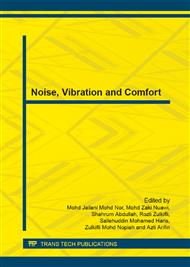p.279
p.285
p.293
p.299
p.306
p.313
p.319
p.324
p.329
Structural Reliability Analysis Using Fuzzy Finite Element Method
Abstract:
The main requirement in designing a structure is to ensure the structure is reliable enough to withstand loading and the reliability study of structure. Classical and probability approach was introduced to analyse structural reliability. However, the approaches stated above are unable to take into account and counter the uncertainties arising from the natural of geometry, material properties and loading. This leads to the reduction in accuracy of the result. The goal of this study is to assess and determine the reliability of structures by taking into consideration of the epistemic uncertainties involved. Since it is crucial to develop an effective approach to model the epistemic uncertainties, the fuzzy set theory is proposed to deal with this problem. The fuzzy finite element method (FFEM) reliability analysis conducted has shown this method produces more conservative results compared to the deterministic and classical method espacially when dealing with problems which have uncertainties in input parameters. In conclusion, fuzzy reliability analysis is a more suitable and practical method when dealing with structural reliability with epistemic uncertainties in structural reliability analysis and FFEM plays a main role in determining the structural reliability in reality.
Info:
Periodical:
Pages:
306-312
Citation:
Online since:
December 2013
Authors:
Price:
Сopyright:
© 2014 Trans Tech Publications Ltd. All Rights Reserved
Share:
Citation:


